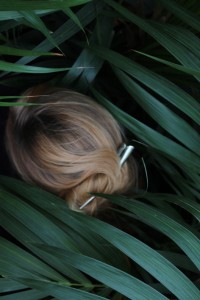Last week, I was building, tiling, painting and gardening in Bristol at the incredible Tyntesfield, a National Trust property making a new work for ‘STILL/life ecologies of perception’ the inaugural exhibition from Trust New Art Bristol.
The exhibition runs from 8th September until early November and the bumpf about the new work is here:
Lady Garden is a new installation which takes its name from an intimate walled area adjacent to the Orangery at Tyntesfield known as Lady Wraxall’s Garden. The structure, which can be entered, encases a micro garden of plants typical to an Orangery. It is able to move between various locations in the Jubilee Gardens and once settled, becomes part of this constructed landscape, a hybrid garden and folly structure. On close inspection the structure mimics a range of architectural, ornamental and design motifs from the house, such as the Turret Room, Minton floor tiles, floral wallpaper and the coloured gloss paint found in some utility areas.
The structure provides shelter in a compartment that is just big enough for one person. This compartmentalization makes reference to the strong gender division of roles and division of rooms in Tyntesfield which was usual in Victorian country houses. The Morning Room, Drawing Room and Mrs Gibb’s Sitting Room (now Lord Wraxall’s sitting room) were primarily female spaces, while the Oak Room and Billiard Room were chiefly used by the men of the house. The architectural and decorative divide between male and female spaces would serve to enforce role distinctions, much as the growth of plants and flowers in Lady Garden are contained and controlled within its structure.
‘Lady Garden presents its best face to the public but that contains a leafy, wild garden inside’ Emily Speed 2013
